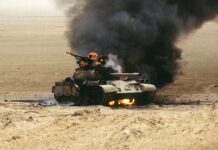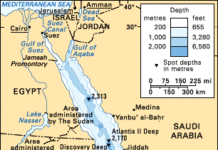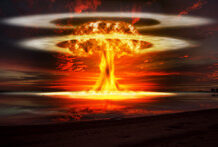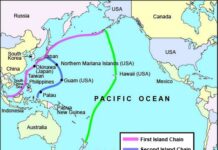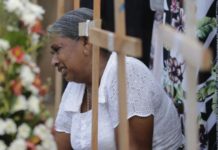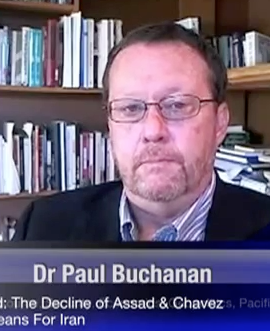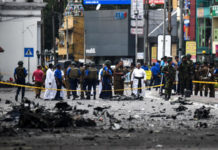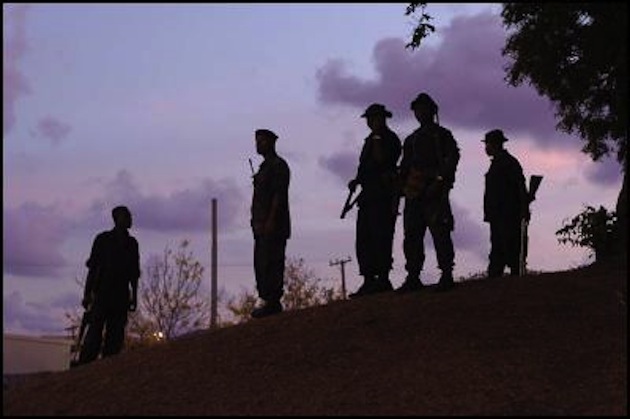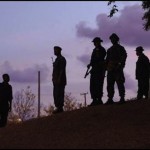Levels of Military Professionalism in the South Pacific
36th Parallel Assessment Series – By Paul G. Buchanan
Introduction:
The announcement comes in the wake of long-term yet unproductive talks in the Pacific Island Forum about creating a regional security force. The announcement serves as a good starting point for a review of the region’s military services. There are six such forces currently operating in the South Pacific. Besides Australia, New Zealand and France (which maintains a Pacific Fleet headquartered in Papetee and garrisons in New Caledonia and Vanuatu), Fiji, Tonga and Papua New Guinea have military forces. The Solomon Islands has paramilitary and coast guard units as well as a domestic police force, but no military per se. Samoa, the Cook Islands and other small Micronesian and Polynesian states have lightly armed police forces. Easter Island and the Galapagos have local police forces and come under the military jurisdiction of Chile and Ecuador, respectively.In the months ahead 36th Parallel Assessments will offer individual assessments of the status of forces of each of the island state militaries. Before doing so this introduction will provide the conceptual and analytic framework in which those assessments will be made.
Part One: Conceptual and Analytic Framework
There are five general typologies of military forces: traditional professional, new professional, revolutionary professional, arbitrator praetorian and ruler praetorian. There are variations within each category and there can be a transition between one type and another. The latter depends on the political context in which the military operates, which makes the issue of military professionalism in part dependent on the status of civil-military relations.
Traditional military professionalism, also known as the Western professional model, is based on military subordination to civilian political authority, an external orientation in the marshaling of force and corporate autonomy with regard to the military as an institution. While the military has a strong voice in strategic planning, threat assessment and the decision to enter into conflict, the military does not interfere in politics and does not make the final decision on going to war. In return for its political subordination, civilians do not interfere in military affairs. The military organization determines its own standards for recruitment, retention and promotion based on expertise in the management of organized violence. It does not engage in internal security (although it may be used in cases of internal emergency like natural disasters). The military sees its role as a commonwealth organization, one that serves the universal public good by providing defense for its fellow citizens. Although it can resort to conscription in times of necessity, the traditional professional military in modern times has tended to be volunteer.
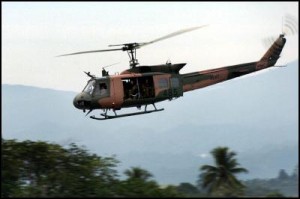 The new professional military is a 20th century phenomenon. Although it maintains an external defense function it has an equal if not stronger orientation towards internal security matters. This is due to the existence of significant armed threats within the country such as irredentist or separatist movements, guerrilla organizations and terrorist groups (or some combination thereof) that exceed the capacity of police forces when it comes to armed engagements. The new professional military also places a premium on its specialized knowledge and logistical capabilities when it comes to internal policy debates on matters outside of the security field, such as in infrastructure development, transportation and strategic resource exploitation. The new professional military is autonomous from but not necessarily subordinate to civilian authority, especially in cases in which that authority is disputed by armed groups or where the government displays overt incompetence, corruption or other inefficiencies detrimental to the effective provision of public goods and services. It relies on conscription to fill in the ranks and maintains its corporate autonomy from civilian institutions but is much more involved in their politics.
The new professional military is a 20th century phenomenon. Although it maintains an external defense function it has an equal if not stronger orientation towards internal security matters. This is due to the existence of significant armed threats within the country such as irredentist or separatist movements, guerrilla organizations and terrorist groups (or some combination thereof) that exceed the capacity of police forces when it comes to armed engagements. The new professional military also places a premium on its specialized knowledge and logistical capabilities when it comes to internal policy debates on matters outside of the security field, such as in infrastructure development, transportation and strategic resource exploitation. The new professional military is autonomous from but not necessarily subordinate to civilian authority, especially in cases in which that authority is disputed by armed groups or where the government displays overt incompetence, corruption or other inefficiencies detrimental to the effective provision of public goods and services. It relies on conscription to fill in the ranks and maintains its corporate autonomy from civilian institutions but is much more involved in their politics.
The professional revolutionary military serves the interests of the foundational ideology upon which the political regime is based, and as such constitutes, along with the Party leadership and public bureaucracy, one third of the ruling “triad” of revolutionary regimes. It reifies the notion of the citizen-soldier via mass conscription and long-term reserve call-ups. Although the former Soviet Union, Cuba, North Korea and the People’s Republic of China are considered to be emblematic of this typology, it has also been seen in variants of Arab developmentalist regimes such as Nassar’s Egypt, the Algerian regime post-independence and the Batthist regimes in Iraq and Syria. Israel offers an example of an important sub-type of this variant, as the Israeli Defense Forces serve to defend the state of Israel as a Jewish state founded on Zionist principles. Another example of this sub-type is seen in Singapore, where the Singaporean Armed Forces were initially organized by the Israeli Defense Forces (in the mid 1960s and early 1970s) and serve as the armed wing of the ruling People’s Action Party (although it should be noted that the PAP regime is liberalizing and the military is increasingly traditional professional in orientation).
The regime ideology does not always have to be “revolutionary” in nature (if “revolution” is defined as parametric change in the socio-economic and political organization of a society). So long as the military’s first role is to defend the regime and its founding ideology rather than the nation as a whole, and the military is a constituent part of that regime, then it adheres to the model. Here the military has both external and internal security functions, and even if autonomous in terms of its internal organization and management, is highly political and often mass mobilizational in nature.
Praetorian militaries are a direct reflection of praetorian societies. “Praetorian” refers to the guardians of Roman emperors who were said to make and unmake Kings. In this context it refers to a highly politicized military that regularly intervenes in domestic political affairs, to include assuming direct control of government via coups de d’état. This type of military gives precedence to internal security, something that is often a natural consequence of the zero-sum nature of political, economic and social conflicts in society as a whole. As political instability and civil unrest increase beyond institutional boundaries, even professional militaries can find themselves drawn into a praetorian situation. Where praetorianism is an entrenched social condition, military involvement in domestic politics is inevitable and often long-term.
Praetorian militaries come in two sub-types. “Arbitrator” (or mediator) praetorian militaries intervene in politics when civilian government has broken down, and with the intent of staying in power only so long as civilians can reconstitute legitimate political order within stable institutional frameworks. Concerned about the deleterious effects prolonged involvement in civilian government management has on war-fighting capability, arbitrator militaries most often set a time limit to their intervention, which can include a timetable for a return to civilian government that includes elections and/or constitutional reforms. They do not seek to impose policy agendas of their own and merely serve as an armed interregnum between instances of civilian governance. A good example of such is the Thai military, which in spite of its professional competence in the military arts has repeatedly intervened in government when civilian political rule is stalemated or unable to function due to partisan conflicts.
“Ruler” praetorian militaries intervene in government without any fixed timetable for departure. In fact, they assume power for indefinite and often prolonged periods, sometimes with a program for action that includes specific policy prescriptions and a programmatic agenda that can often be broad and comprehensive in nature. Often times they follow on repeated unsuccessful attempts at playing the arbitrator role in a fractious polity. A classic instance of such rule is the Chilean military-bureaucratic regime of 1973-1990, which set to forcibly re-organize Chilean society around market principles after a period of Socialist government. Although they presented more personalist and populist characteristics when compared to the Pinochet regime, the Sukarno and Suharto regimes in Indonesia offer well-institutionalized variants of the ruler praetorian type as well.
In some lesser-developed countries ruler praetorian militaries assume the character of armed guards of personalist dictatorships. Their levels of professionalism are very low, comisurant with the levels of political instability that envelops them. In a few cases they barely ascend beyond the level of an armed mob. The regime is predatory and patrimonial, so the military reflects that fact.
All military organizations suffer from horizontal and vertical cleavages. The issue is not that they exist but how they are managed. Vertical cleavages are inter-service rivalries such as between the Army, Air Force and Navy. They also include specialization rivalries such as those between infantry, armor, airborne and special or commando forces. Horizontal cleavages are those between the officer corps and the enlisted ranks as well as within the office corps itself (for example, between junior and senior officers or between different yearly cadres of graduates from military academies).
The degree to which service cleavages are subordinated to overall institutional unity and cohesion is one measure of military professionalism. This becomes contentious when defense budget share is at stake, in the determination of force size and distribution, in promotions, and in strategic perspectives and threat assessments. Collegial professional militaries operate on a power-sharing principle in which all services participate in high command appointments and in which strategic policy is made by consensus. Prussian-style militaries use strong hierarchical principles rooted in strict vertical lines of authority that vest ultimate veto power and military decision-making in a small group of senior officers. Revolutionary militaries begin as collegial fighting forces with decentralized and non-hierarchical decision-making processes, but as they move to regime defense they develop hierarchical lines of command that parallel civilian political authority while serving to professionalize the military as an institution.
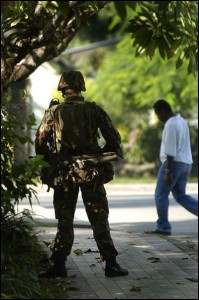 The problems of service cleavages are compounded in countries in which ethnic, racial, religious, class or other sectarian divisions permeate the military establishment. In many countries the officer corps is drawn from specific classes, castes or social groups while the enlisted ranks are recruited from others. Social cleavages may overlap inter-service cleavages, such as when Naval and Army officer corps comes from different social classes. The more divisions evident in society at large are replicated within the military institution, the more likely that it will have a negative impact on overall service professionalism as well as on civil-military relations.
The problems of service cleavages are compounded in countries in which ethnic, racial, religious, class or other sectarian divisions permeate the military establishment. In many countries the officer corps is drawn from specific classes, castes or social groups while the enlisted ranks are recruited from others. Social cleavages may overlap inter-service cleavages, such as when Naval and Army officer corps comes from different social classes. The more divisions evident in society at large are replicated within the military institution, the more likely that it will have a negative impact on overall service professionalism as well as on civil-military relations.
Because they control territory, Armies have tended to be the dominant service where more than one exists. This includes maritime nations such as Britain, New Zealand or Portugal, although the specific reasons for Army dominance differs in each case. The more expeditionary the military strategic orientation, the more that offensive-oriented services capable of projecting force over distance will have a voice in command decision-making. The more land-locked and defensive the strategic rationale, the more likely ground-based command will hold sway in strategic discussions.
In summary, military professionalism is determined by the nature of civil-military relations as well as the institutional development and technological capabilities of the armed organization. That is reflected in force composition, training and deployment, which is influenced by geopolitical and strategic perspectives on the threat and diplomatic environment in which the military operates. Recognizing that pure types do not exist and that there is variation within the categories, this series will use the classification scheme outlined above to situate South Pacific militaries in terms of their professionalism and relationship with the societies they ostensibly serve.
C. S. Gray, Modern Strategy. Oxford: Oxford University Press, 1999.
S. P. Huntington, The Soldier and the State: The Theory and Politics of Civil-Military Relations. Cambridge: Harvard University Press, 1957 (1985).
M. Janowitz, Military Institutions and Coercion in Developing Nations. Chicago: The University of Chicago Press (1964, 1977) 1988.
A. Perlmutter and V. P. Bennett. The Political Influence of the Military: A Comparative Reader: New Haven: Yale University Press, 1980
S. Simon ed., The Military and Security in the Third World: Domestic and International Impacts. Boulder, CO: Westview Press, 1978.
A. Stepan, Rethinking Military Politics: Brazil and the Southern Cone. Princeton: Princeton University Press, 1988.


